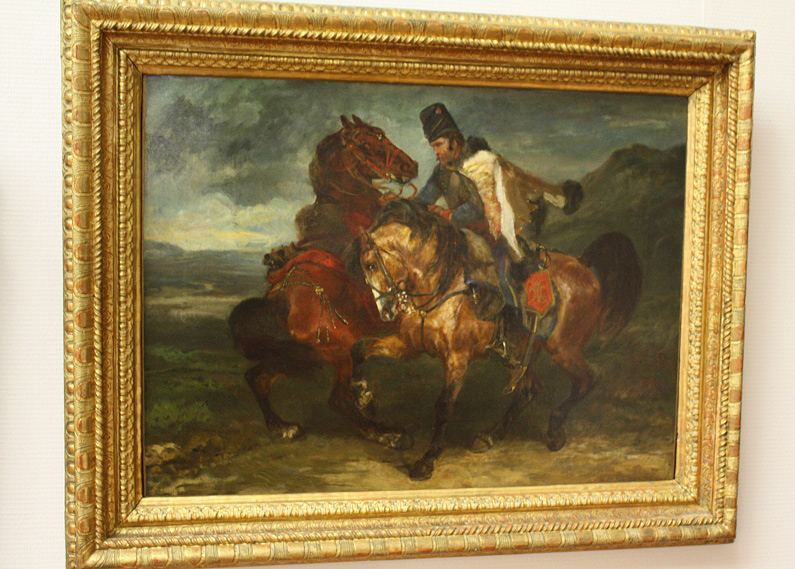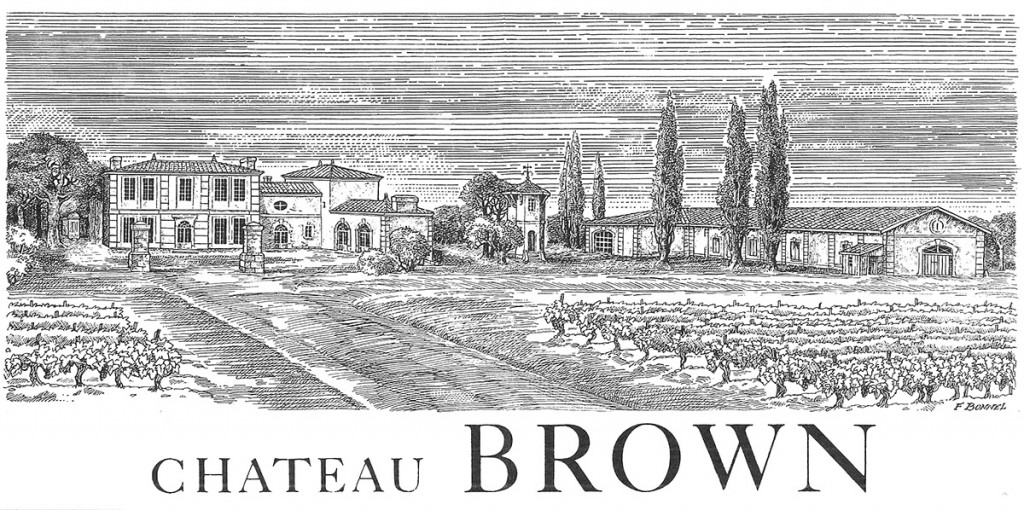The history of BROWN goes back almost one thousand years, with traces of vines here as early as the 12th century. Two centuries later, during the Hundred Years’ War between the Kingdoms of England (the Plantagenets) and France, Aquitaine and its vineyards were to remain in English hands for quite some time.
Château Barrière (named after Antoine Barrière, owner from 1750 to 1795) officially took the name Château Brown at the end of the 18th century. Indeed, Château Brown owes its name to a rich Scottish wine trader, John-Lewis Brown, who settled in Bordeaux shortly after the Revolution, in 1795. He built Château Brown’s iconic chartreuse house and he was determined to transform his Léognan estate into somewhere as beautiful as it was productive.
J.L. Brown was also behind the construction of Château Cantenac-Brown (Margaux) and was known for his luxurious lifestyle and countless receptions organised in the Médoc.
In addition to his name, this wine and art enthusiast passed on his passion for the vine and for painting to his grandson, animal painter John Lewis Brown (1829-1890). He spent part of his childhood at Château Brown, in the fashionable equestrian and art circles where his family moved. A childhood that would shape his work – especially hunting scenes – which can be found today in the Musée des Beaux-Arts in Bordeaux, Libourne or Tate London…
This celebrated animal painter enjoyed fame across Europe and a precursor of Impressionism: it is even said that the Hermès brand drew inspiration from his paintings for the designs of some of its famous silk scarves…

“Le Hussard” by JL Brown, in Libourne Fine Arts Museum
In 1884, at the Amsterdam Universal Exhibition, Château Brown won a gold medal alongside Château Mouton, Château Leoville-Poyferré, Château Pontet Canet… Other gold medals followed. It obtained the classification of Premier Cru.
In 1938, the Bonnel family bought the estate of 200 hectares. At the time, Château Brown was one of the region’s three largest estates, alongside Olivier and La Louvière.
It was to remain in the Bonnel’s family for three generations, until 1994.
After the Second World War, the estate, and the vineyard especially, lost ground to urban planning. It was reduced in size to around forty hectares, before disappearing completely in the 1950s (frost disaster in 1956 and government subsidies for uprooting). Brown’s vineyards then fell into decline, and did not fulfil the classification requirements to be included in the 1953 or 1959 Graves Crus Classés classifications.

Lithograph of the Château in the 1980s